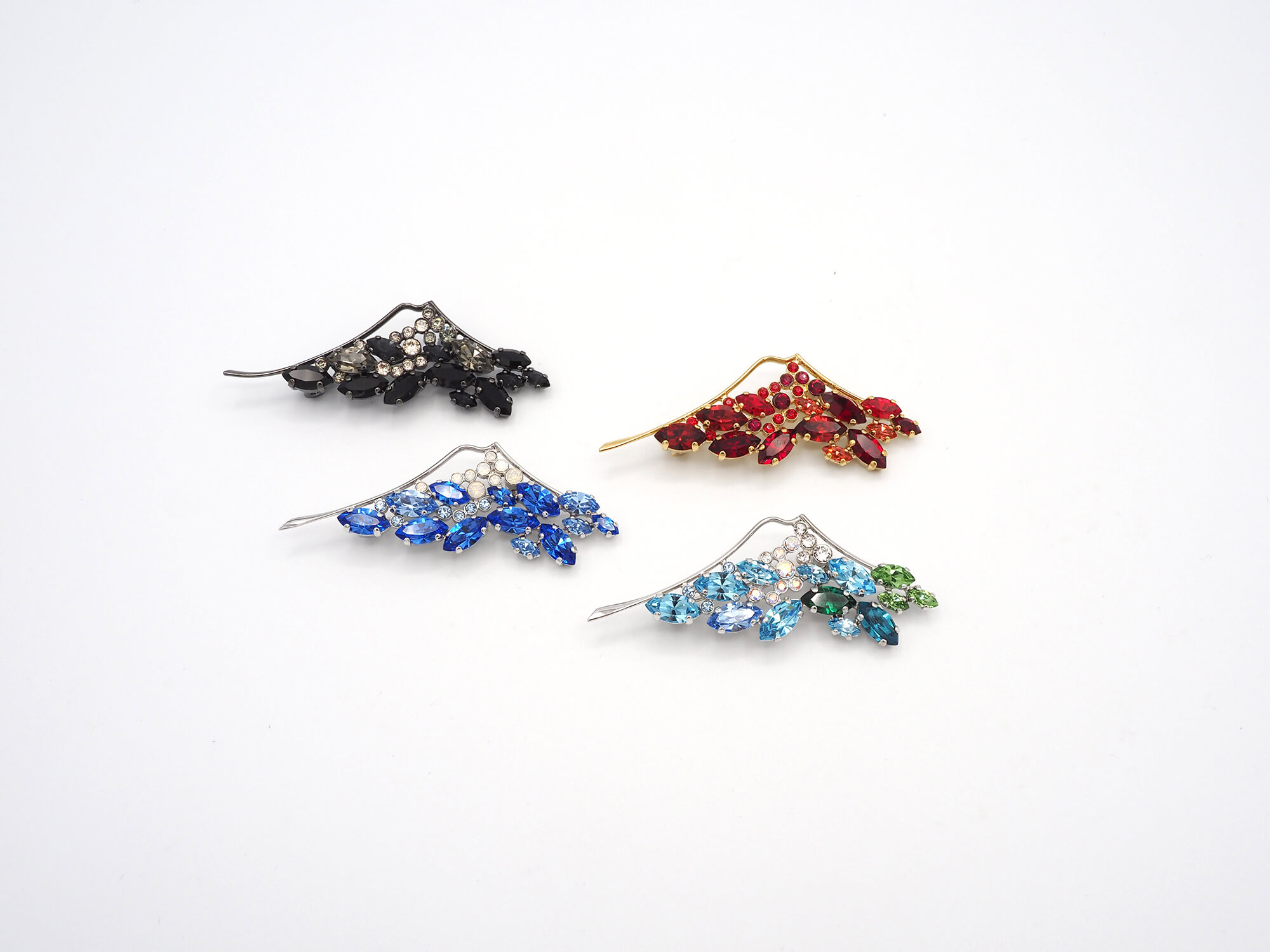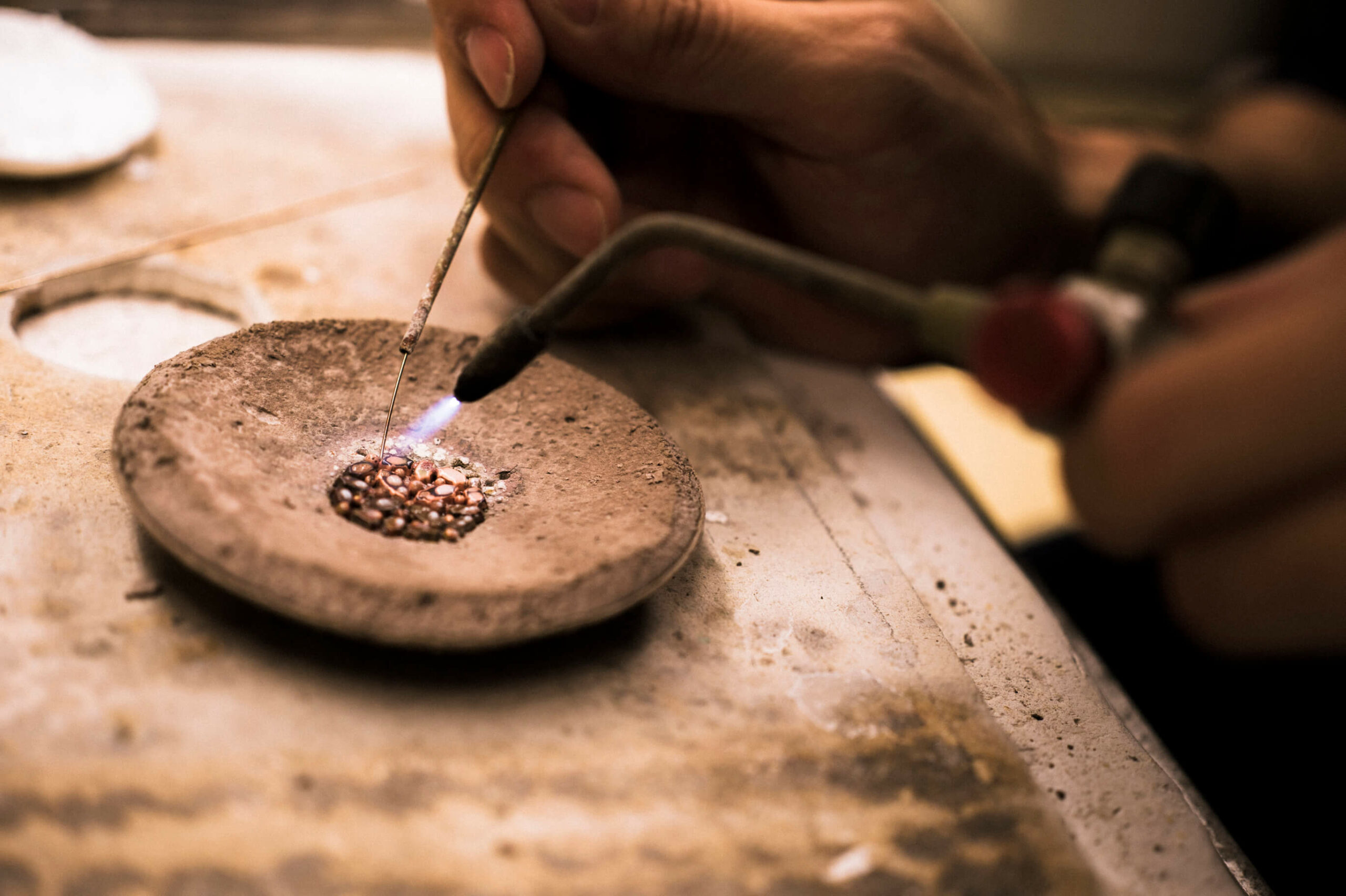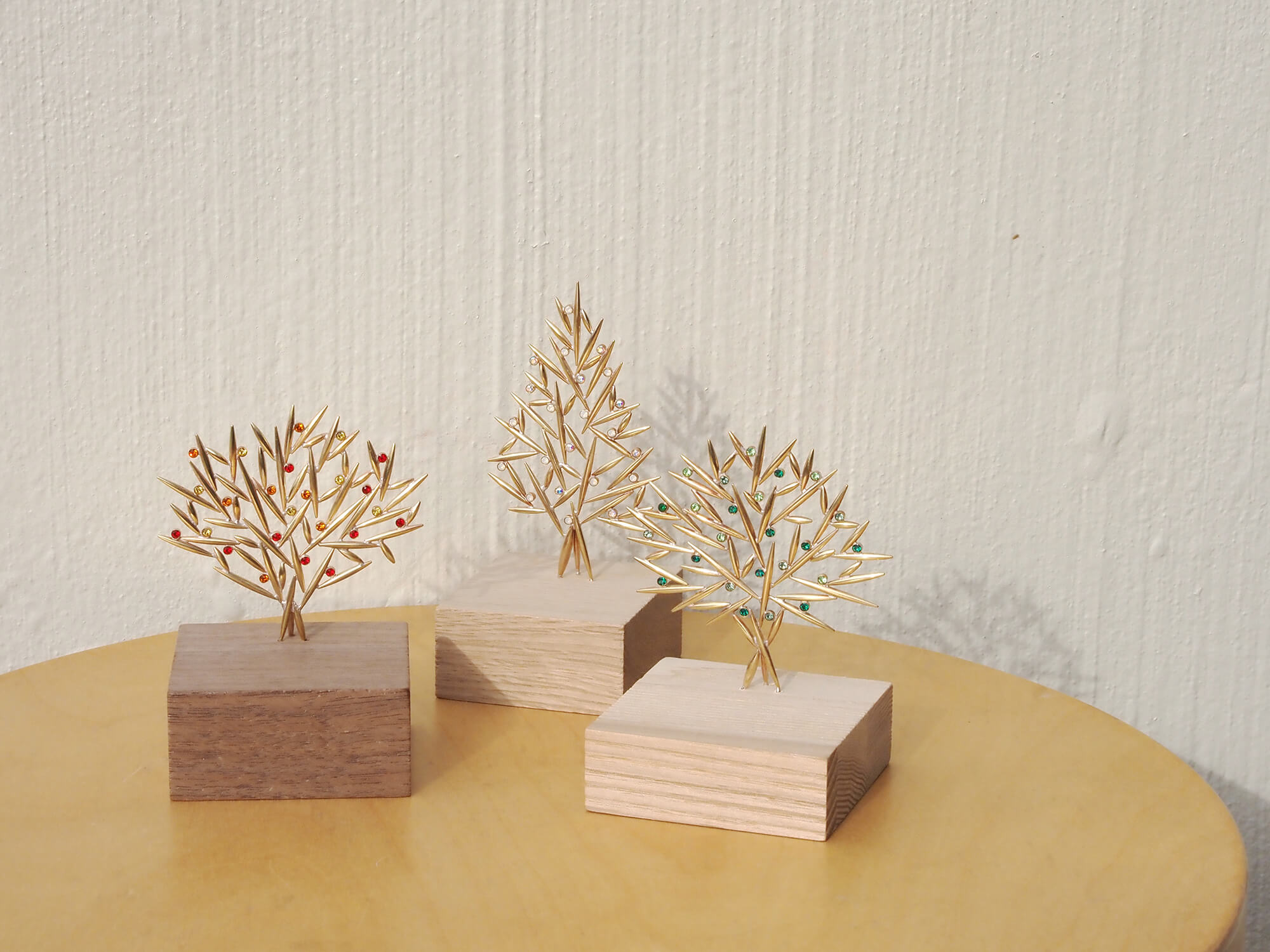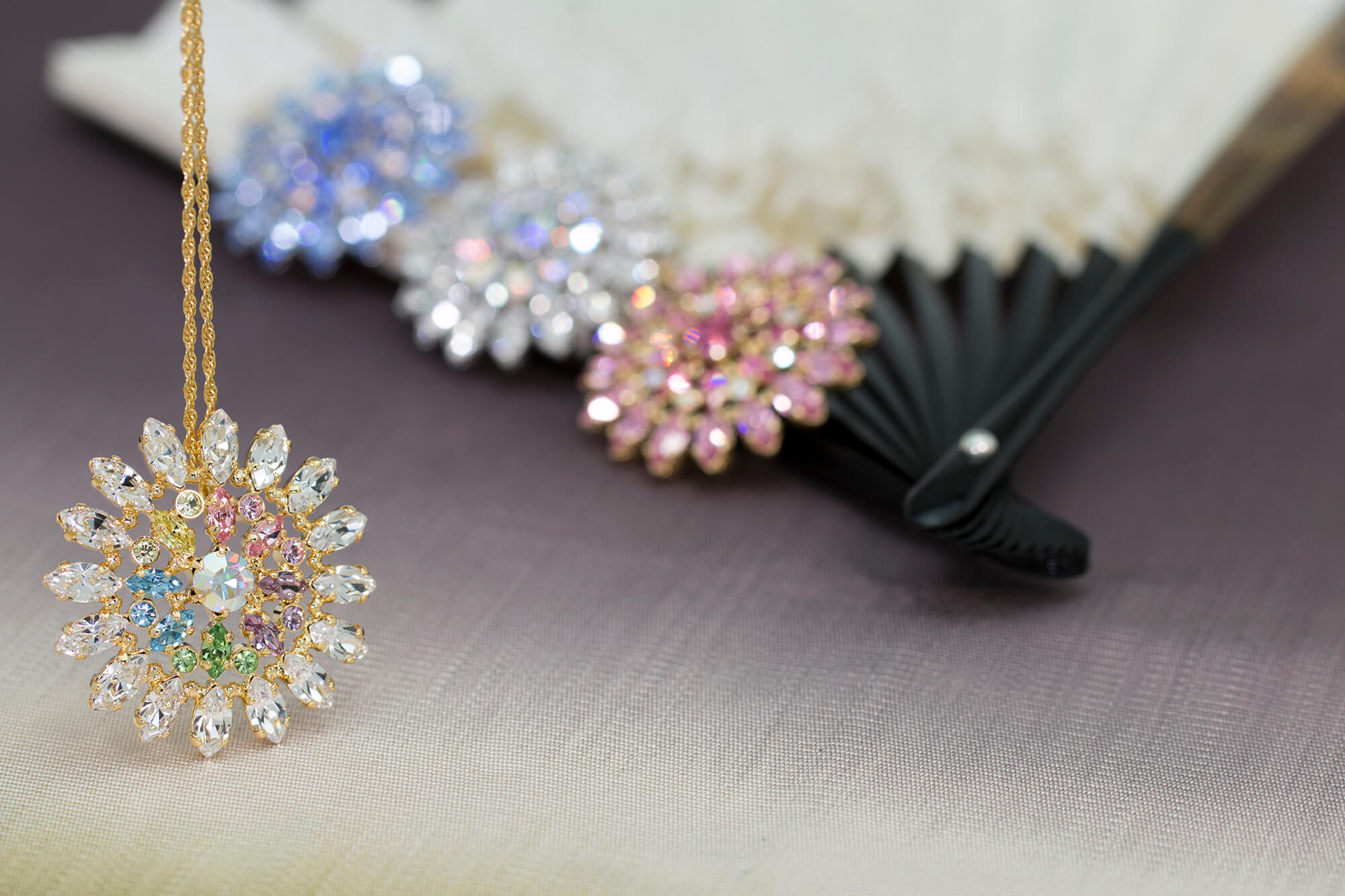
"Yosemono" is a technique in which decorative objects ("mono") are created by bringing together ("yose") various different components.
Following the World War II, mass production was made possible by using molds to cast goods. "Yosemono" artisans, who created individual goods, one by one, gradually disappeared.
It is now said that there are only a handful of artisans in Tokyo who can create three-dimensional objects like tiaras using yosemono techniques due to the difficulty and rarity of the techniques involved.
Yosemono are notable for the lace-like, delicate impression they make, as each part is connected to each other part with single linear or point-to-point connections, creating a lattice that provides a glimpse into what lies behind it. For yosemono made with crystal glass, the metal connecting parts are almost completely invisible from the front, producing distinctive pieces with expressive designs formed by glittering light alone.
Yosemono are elegant but also lightweight, so this technique is essential for the creation of jewelry such as necklaces worn at weddings or other opulent occasions.
MASAAKi TAKAHASHi's designs always begin with a story, as do his architectural space creations.
He uses Western crystal glass to create works with a Japanese feel, such as his "Fireworks," "Brook," "Kabuki," "The Tale of Genji," and "Mt. Fuji" pieces. These works have also drawn attention overseas.
Following the World War II, mass production was made possible by using molds to cast goods. "Yosemono" artisans, who created individual goods, one by one, gradually disappeared.
It is now said that there are only a handful of artisans in Tokyo who can create three-dimensional objects like tiaras using yosemono techniques due to the difficulty and rarity of the techniques involved.
Yosemono are notable for the lace-like, delicate impression they make, as each part is connected to each other part with single linear or point-to-point connections, creating a lattice that provides a glimpse into what lies behind it. For yosemono made with crystal glass, the metal connecting parts are almost completely invisible from the front, producing distinctive pieces with expressive designs formed by glittering light alone.
Yosemono are elegant but also lightweight, so this technique is essential for the creation of jewelry such as necklaces worn at weddings or other opulent occasions.
MASAAKi TAKAHASHi's designs always begin with a story, as do his architectural space creations.
He uses Western crystal glass to create works with a Japanese feel, such as his "Fireworks," "Brook," "Kabuki," "The Tale of Genji," and "Mt. Fuji" pieces. These works have also drawn attention overseas.
Philosophy & Vision
Carrying on Secret Traditional Crafting Techniques Passed Down from Generation to Generation

Masaaki Takahashi, president of atelier 8 Ltd, heard that the techniques of yosemono, practiced by his parents in their work, were seldom being passed down to younger generations. Led by his desire to preserve these wonderful techniques, he leveraged his own experience as an architect to launch the MASAAKi TAKAHASHi brand.
He carries the torch of the traditional techniques of yosemono as he creates new works that put smiles on customers' faces. He takes special orders, performs OEM manufacturing, and creates promotional goods, primarily for clients in Tokyo, handling everything from small orders to mass production, based on customer needs.
He is also a part-time instructor at Bunka Fashion College, which is always at the forefront of fashion, raising a new generation of yosemono designers and creators.
He carries the torch of the traditional techniques of yosemono as he creates new works that put smiles on customers' faces. He takes special orders, performs OEM manufacturing, and creates promotional goods, primarily for clients in Tokyo, handling everything from small orders to mass production, based on customer needs.
He is also a part-time instructor at Bunka Fashion College, which is always at the forefront of fashion, raising a new generation of yosemono designers and creators.
Creator's Commitment
Yosemono Techniques―Not Just for Fashion Accessories

In the past, yosemono has primarily been used for the creation of fashion jewelry. However, as times have changed and new manufacturing methods have been developed, the high manufacturing unit cost of yosemono, together with the low number of yosemono artisans, has resulted in a shrinking need for yosemono within the jewelry and fashion accessory markets.
That's why Masaaki Takahashi is planning to expand into decorations, sundries, stationery, and the like, led by his desire to grow the yosemono market by advancing into new fields. He also provides instruction on how to use yosemono techniques, holding workshops and conducting seminars to popularize yosemono and pass on these traditional techniques.
That's why Masaaki Takahashi is planning to expand into decorations, sundries, stationery, and the like, led by his desire to grow the yosemono market by advancing into new fields. He also provides instruction on how to use yosemono techniques, holding workshops and conducting seminars to popularize yosemono and pass on these traditional techniques.

